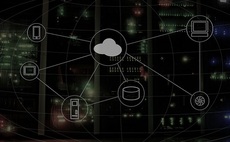Since March 2020, most of us have come to rely on mobile apps, cloud suites, collaboration platforms, and video conferencing tools to do our jobs, liaise with colleagues, and talk to loved ones, family, and friends.
It's no exaggeration to say that these technologies have kept many businesses afloat during the pandemic and enabled isolated people to stay connected to the outside world and essential services.
We have all been able to shop, manage our finances, access life-saving information, and transact business online - assuming that we don't live in broadband ‘notspots' of poor connectivity.
Don't forget the hardware dimension
But with so much emphasis placed on software over the past year, it is easy to overlook the critical importance of the hardware we rely on to access that ever-changing set of applications, which are so often driven by fashion and peer pressure.
For the enterprise, its laptops, desktops, tablets, smartphones, monitors, networking tools, and ancillary hardware all demand significant financial outlay, management, interoperability, support, maintenance, and security. This makes them both strategic and operational considerations.
So how do IT leaders believe that their hardware has been performing in a year that has seen widespread digital transformation during this global shift to homeworking?
The surprising news, perhaps, is that more than half of respondents to a Computing survey of 150 IT leaders found their corporate hardware more flexible than they had previously thought it to be.
That said, over 15 percent admitted that their platforms had proved to be less flexible and adaptable than they had imagined.
Planning the upgrade path
Whichever might be the case organisation by organisation, Computing found that most respondents have been forced to plan an upgrade of at least some of their hardware over the next three years, now that staff have been using sanctioned devices daily in this unexpected context.
Eighty percent of organisations answered between ‘5' and ‘10' when asked, on a scale of 1 to 10, how significantly they have been obliged to look at upgrading staff hardware - with 1 being not at all and 10 very significantly.
So, why is this?
The Covid-19 crisis has forced many IT teams to equip remote workers with basic hardware so they can continue doing their jobs away from the office. This has certainly been the case where there was no culture in place of employees using their own devices.
Basic is not enough
Yet the existing stock of laptops and tablets may have been just that, basic (or out of date) and so not up to the task of running the latest remote access systems, collaboration platforms, videoconferencing apps, VPNs, authentication tools, and/or high-speed networking.
In some cases, hardware may have been running outdated operating systems or applications. Other organisations may only have had emergency standby stocks available, and so supplying a device to every member of staff may never have been considered, let alone budgeted for.
In some communities, companies may also have had to invest in mobile broadband hotspots for their staff, while employees living in accommodation that was ill-suited to their jobs might have needed other forms of help.
Managing the estate
But even well-equipped and better-funded organisations have faced hardware-centric challenges. The biggest of these has been enabling remote management and improving cybersecurity on all of those dispersed devices - thousands of them in larger organisations.
Remote working at scale has made remote management and security more difficult at a time of significant stress and change, if the device itself does not support it at the hardware level.
New types of threat have certainly emerged during the pandemic. Widening the perimeter of the organisation to include home offices and family routers has increased the risk to sensitive data, as has the rise in organised crime, fraud, hacking, phishing, and social engineering attacks.
Robust device security needs to underpin the post-perimeter Zero Trust strategies that are essential to surviving in this new world. It can't be left to chance and/or to employees' common sense.
So, what are the key hardware manageability and security must-haves? According to Computing's research, the top six are:
- Multi-factor authentication (cited by 68 percent of respondents)
- Cloud-based administration (55 percent)
- End-to-end encryption (52 percent)
- Advanced access control (46 percent)
- Zero Trust security (33 percent)
- Off-domain device management capabilities (33 percent)
In conclusion, the hardware platform of 2021 must, above all, be flexible, independent of geography, OS, and network. In other words, it must reflect the modern workforce that it equips and enables. And it should be standards-based and built for a future that is emerging fast, and which itself demands flexibility.
Find out how the Intel® Evo™ vPro® platform can support your modern workforce with its comprehensive security features, leading modern manageability and first-rate responsiveness. The Intel Evo vPro platform is built for what IT needs and what users want.




















